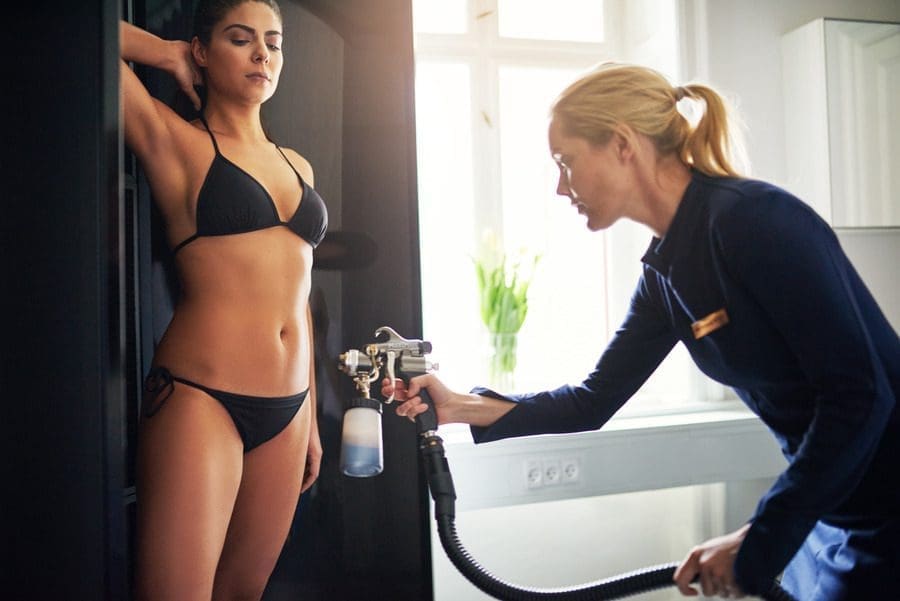Are spray tans bad for your skin? The answer is complicated. And though we don’t have a cut-and-dry explanation, we do have some interesting information to share. Keep reading to learn more.
How Do Spray Tans Work?
The main ingredient in spray tan formulas is DHA, or dihydroxyacetone, an FDA-approved colorless sugar compound that produces a golden brown appearance. Once DHA is applied to the outermost layers of your skin, a reaction occurs, forming a rusty brown protein. This is why spray tans don’t easily wash off. They stick around for about a week or two, and are only fully gone when the brown proteins are shed or scrubbed off.
Is DHA risky?
The past two decades have been too focused on the benefits of spray tanning vs. tanning beds with UV rays. In order to get a tan from a tanning bed or the sun, UV radiation must penetrate your skin, making you more susceptible to skin cancer and other skin-related issues. But now that DHA is becoming more popular, people are asking whether it is safe.
There are some concerns regarding DHA absorption through skin and mucous membranes. For example, if it’s inhaled, will it affect our lungs? If it’s absorbed through the deep layers of skin, can it affect our genetic makeup? The answers are unclear, though some studies point toward DHA causing DNA damage, cell stress, and cell death. Unfortunately, all of these potential side effects can lead to cancer.
Are There Other Ingredients in Spray Tans?
DHA isn’t the only ingredient in spray tanning formulas. You’ll also find slight fragrances that could potentially harm people with chemical sensitivity syndrome. Most spray-tan solutions also contain parabens, which act as a preservative in the spray that can also potentially cause allergic reactions.
Advice for Spray Tanning
- Always ensure the area is well-ventilated before getting sprayed. Hold your breath as they spray so you aren’t actively inhaling the spray.
- Apply your spray tan at least two days prior to a special event so it doesn’t rub off on your outfit or have a potent smell.
- Always pat your body dry with a hand towel after showers – do not rub dry.
- Scrub your body well beforehand so pigmentation buildup does not occur.
- Shave legs, armpits, and all other bodily regions you normally shave at least 12 hours before applying.
- Continue to use sunscreen if you’re out in the sun for extended periods. Pat into your skin vs rubbing.
- Limit pool and chlorine exposure.
- Do not layer spray tans; wait until one sheds or is fully exfoliated before applying another.







